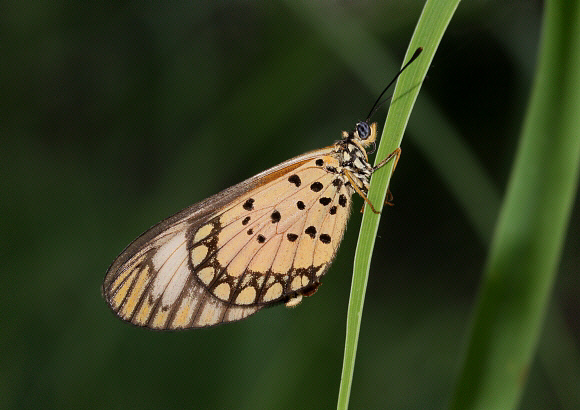
Introduction
There are 228 Acraea species, of which 223 are Afrotropical in distribution. The majority are found in the forests and savannahs of East Africa, while about 60 are found in West Africa. Beyond Africa a further 5 species occur in the Oriental region, and another is found in Australia / New Guinea. In the neotropical region there are 50 additional species, but these are normally placed in the genera Actinote, Altinote and Abananote due to differences in venation and genitalia.
All Acraea species have elongate forewings and rounded hindwings. The wings are thinly scaled and in many species are semi-transparent. The scales wear off very easily so that insects more than 4 or 5 days old have a glassy or greasy appearance. The majority of species have a predominantly brownish or greyish ground colour, marked with bands or patches of red or orange. The basal area of the underside hindwings of most species is marked with a pattern of small black spots.
Acraea serena is found across the entire African continent, including Madagascar and most of the smaller islands.
Habitats
This species inhabits savannah / woodland mosaics, secondary forest and forest clearings, coastal grassland and dunes, farmland, parks, gardens and wasteland, from sea level to about 1500m.
Lifecycle
The main larval foodplant is Triumfetta ( Tiliaceae ), but Hibiscus, Sida ( Malvaceae ), Dombeyia, Melochia, Waltheria, ( Sterculiaceae ), Nicotiana ( Soliaceae ), Cordia ( Ehretiaceae ), Gmelina and Tectona ( Verbenaceae ) are also recorded.
Adult behaviour
The butterflies are usually seen in two’s and three’s, sometimes in larger numbers flying in open sunlit areas. In late afternoon they gather in sheltered areas to roost among tall grasses.
